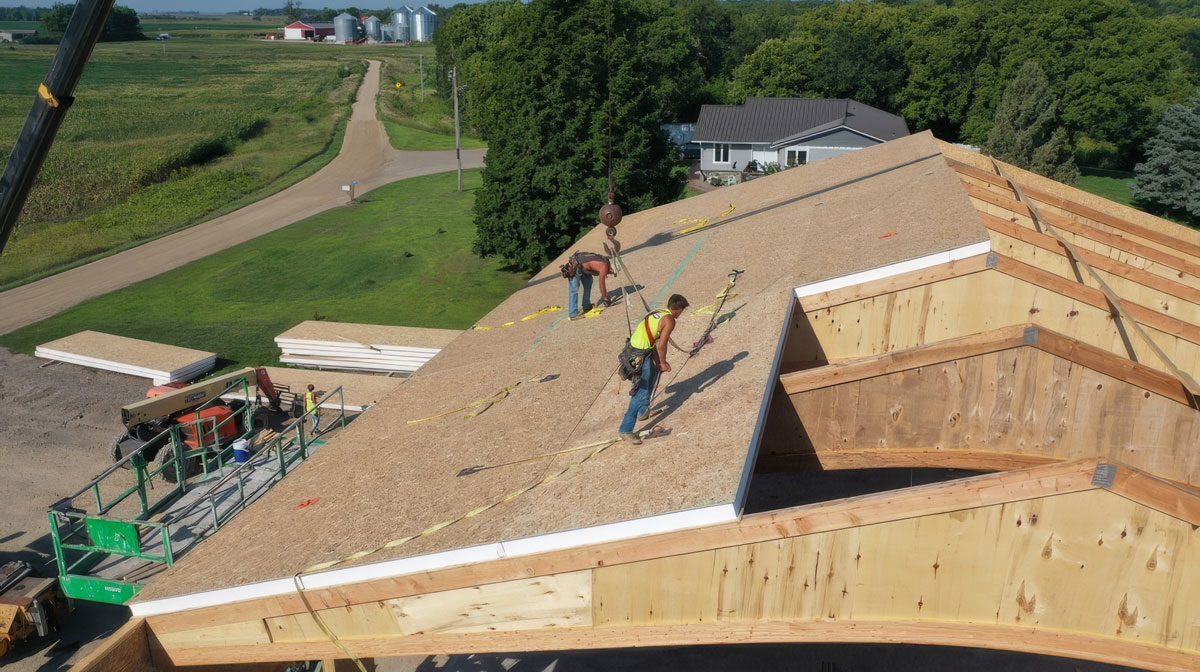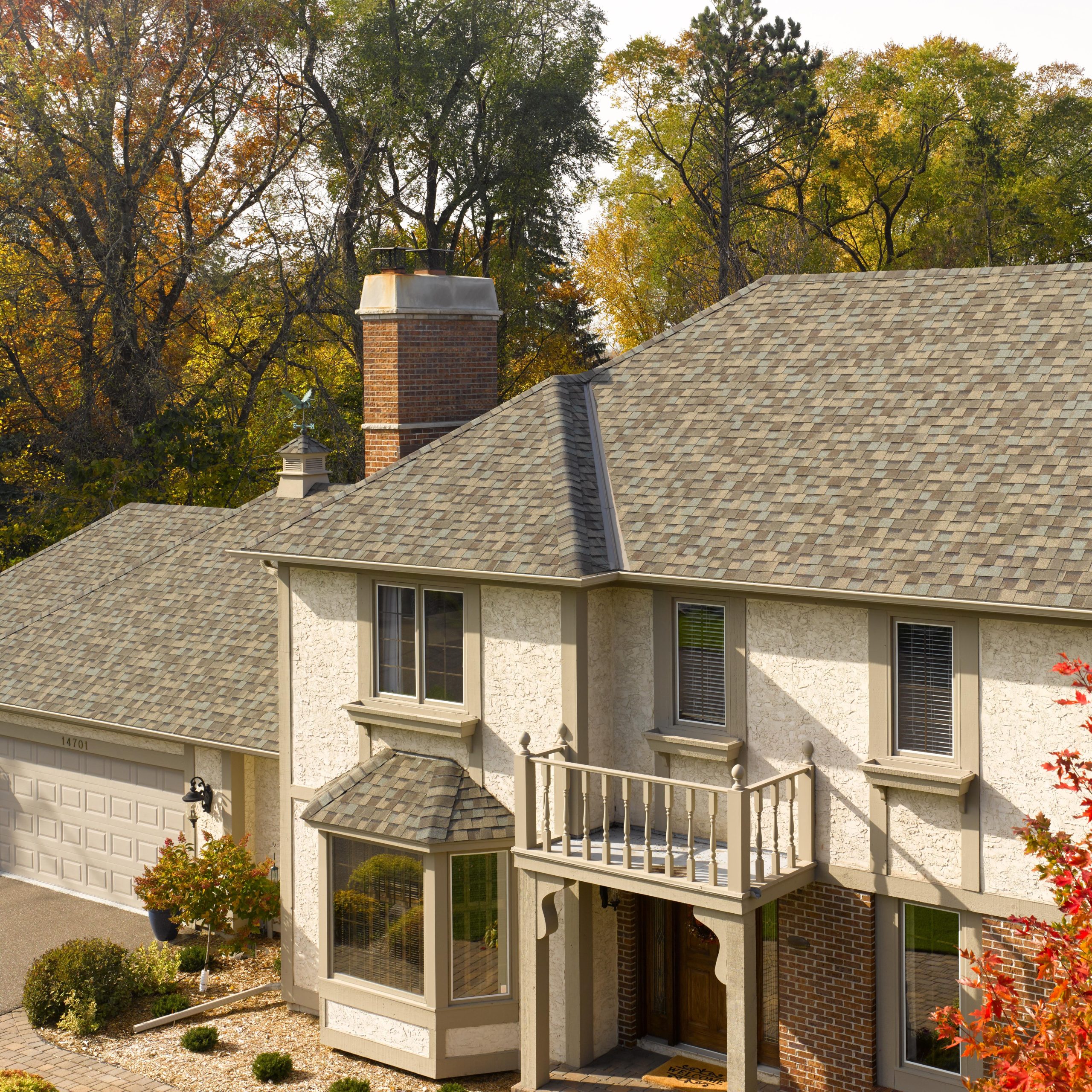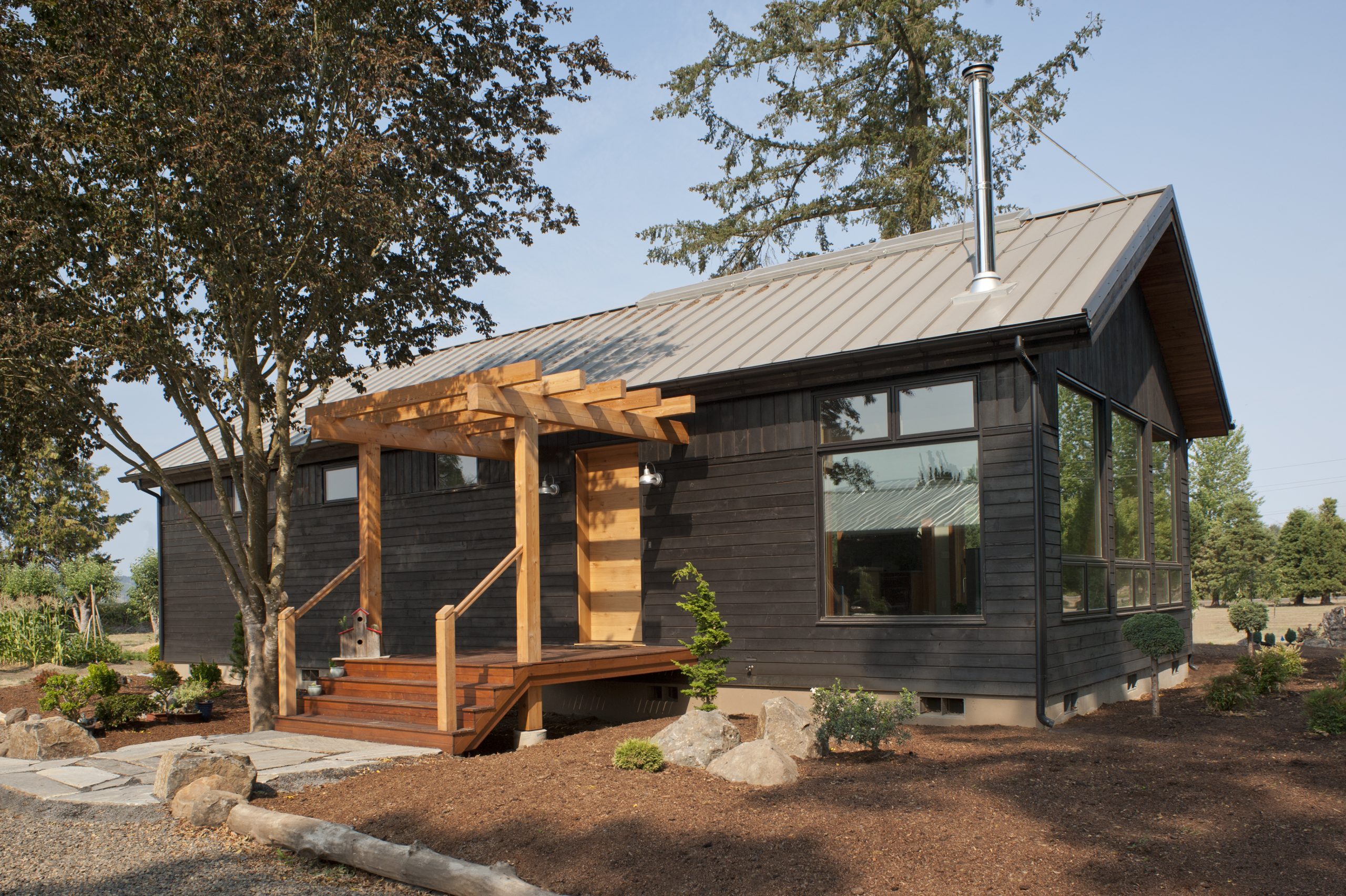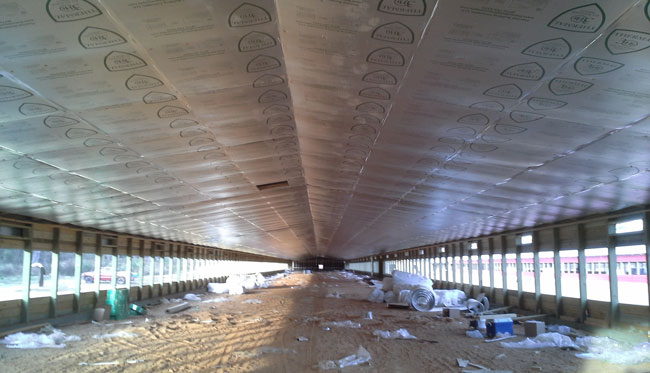By JACK ARMSTRONG
After years of urban migration, rural America is experiencing a surprising reversal. According to the U.S. Department of Agriculture’s Economic Research Service report, “Rural America at a Glance (2023 edition)”, nonmetropolitan counties saw a surge of over 684,000 new residents from mid-2020 to 2022. This marks a significant shift from the previous decade’s near-zero growth rates. Many factors can be attributed to this move. Declining poverty rates and an increase in job opportunities within these areas are making them more attractive. Additionally, the post-pandemic rise of remote work has allowed many city dwellers to embrace a more rural lifestyle, which offers greater space and a potentially lower cost of living.
This shift presents a golden opportunity for builders and contractors in the region but also some challenges. It can translate to more work but they will need to meet the growing need for infrastructure and housing while navigating a national labor shortage. Adding to this complexity, the emphasis on sustainable construction practices and stringent building standards demands innovative solutions. Rising to the challenge, many professionals are putting advanced and efficient construction methods to the test.
Builders and contractors in rural America are increasingly turning to the tried-and-true Structural Insulated Panels (SIPs) to help them build faster while also elevating their building’s performance. A forward-thinking approach to construction, SIPs are engineered panels featuring a rigid foam insulation core sandwiched between structural facings, typically oriented strand board (OSB). Incredibly versatile, SIPs can be used in walls, roofs and floors in large sizes up to 8 feet x 24 feet and in thicknesses ranging from 4-½ inches to 15 inches, meeting varied project requirements.
Unlocking installation efficiency with SIPs
Manufactured under factory-controlled conditions, SIPs offer a distinct advantage over traditional stick-built methods. One of the most compelling benefits of SIPs is their ability to expedite construction. Unlike traditional methods that require on-site framing, SIPs arrive prefabricated, ready for immediate installation. This significantly reduces framing time, translating to faster project completion.
This level of efficiency was on display during the construction of the award-winning Neuman Farm Shop project in Cottonwood, Minnesota. This multifunctional agricultural facility, designed for farm equipment storage, maintenance, and repair, uses SIPs for both walls and roofs. The prefabricated nature of SIPs streamlined the construction process, helping the building team bring the project to completion one month ahead of schedule. The time efficiency translated to significant cost savings on labor and overall project expenses.
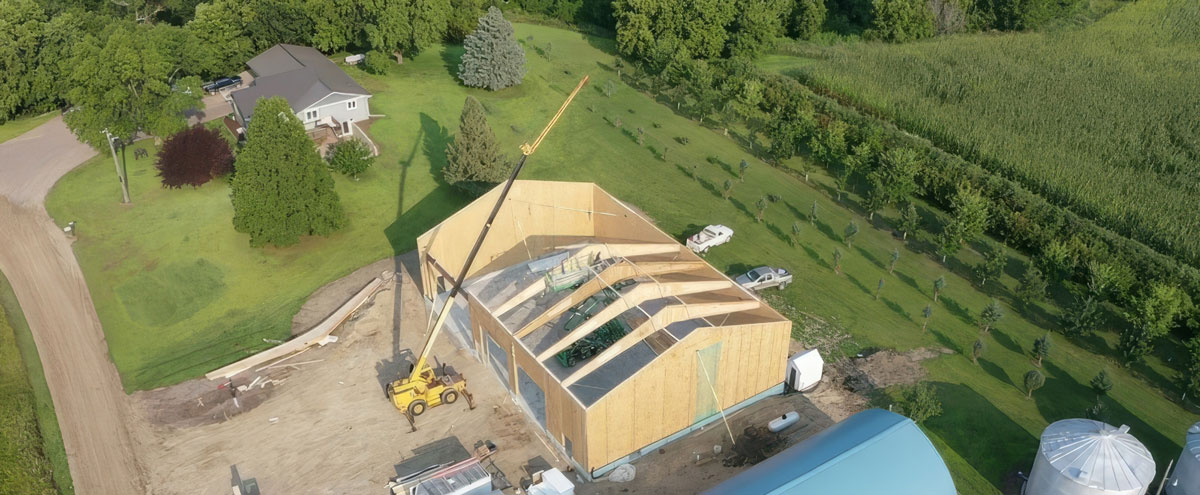
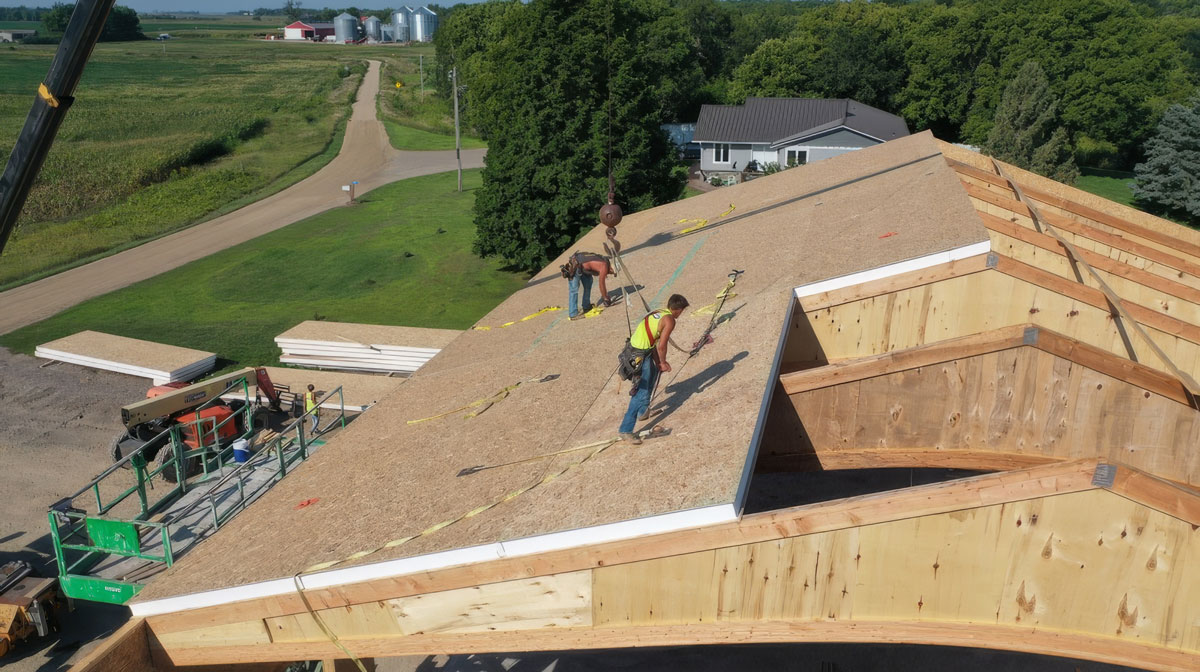
Leveraging SIPs to create a virtually airtight building envelope
While speed is a major benefit, there’s another reason SIPs are becoming increasingly popular in rural areas: energy efficiency. This is a key factor for professionals building in counties experiencing temperature extremes, from the scorching summers of the Midwest to the harsh winters of the North. Unlike traditional construction practices that can succumb to thermal bridging, SIPs’ composite makeup minimizes air leakage and heat transfer.
When the Department of Energy’s Oak Ridge National Laboratory (ORNL) tested a SIP building with a stick-framed building, it found the SIP structure was 15 times more airtight. Consequently, SIP structures can achieve stable interior environments and superior thermal performance, regardless of the climate outside. This leads to significant energy and cost savings on utility bills throughout the year. SIP structures’ air impermeability is also beneficial in rural areas that have higher concentrations of dust, pollens and other allergens from surrounding fields and farms. The airtightness also keeps unwanted farm odors (manure or burning smells) from entering the building, helping builders create a cleaner, healthier and more pleasant environment inside.
By tapping into SIP’s ability to create a high-performing envelope, builders and contractors can showcase their commitment to environmental responsibility, attracting clients seeking energy-efficient structures. This is exactly what the project team at the Neuman Farm Shop did. They capitalized on SIPs’ superior insulation properties to ensure energy efficiency while providing the desired temperature stability year-round and occupant comfort.
How to handle and store SIPs
To fully realize the performance potential of SIPs, proper handling and storage throughout the construction process is critical. Here are some best practices for rural builders and contractors to keep top of mind:
• Handling: SIPs come in various sizes and their weight can vary accordingly. While smaller SIPs can be handled with manpower alone, larger ones require a crane or forklift for safe and efficient movement. Plan deliveries and have the necessary equipment on hand to avoid any potential damage during unloading.
• Organizing: For a smooth and efficient building process, keeping SIPs organized is important. Dedicate a level storage area and arrange SIPs by floor or section for easy identification and retrieval when needed. Ensure all identifying marks or labels are readily visible when stacking SIPs.
• Protecting: If left unattended, SIPs are susceptible to damage from rain, snow, and extended sun exposure. This can compromise their insulative properties and structural integrity. To prevent this, never store SIPs in direct contact with the ground. Elevate them on a level surface using appropriate support structures (ensure 3-inch ground clearance) and always cover them with a loose tarp or sheet of poly when stored on-site.
• Supporting: When storing SIPs, the number of support points depends on their size. Use two stickers for eight-foot-long SIPs. Longer SIPs (12-16 feet) require three support points. For even greater lengths, maintain a maximum distance of six to eight feet between support points to prevent sagging and potential damage.
How to install SIPs right
Installing SIPs correctly is central to achieving an air-tight envelope. Here are some common considerations for contractors and builders:
• Set Wall Plates Carefully: Because SIP facers provide the strength for SIP walls, it is crucial to fully support SIPs with sill plates, typically attached to the building’s foundation. During installation, slip or slide the SIP over the bottom plate and ensure that both sides of the outer OSB edges at the bottom of the SIP are adequately supported on the sill plate.
• Capillary Break: Create a capillary break between the bottom edges of the SIP and the concrete foundation underneath to prevent moisture transfer.
• Install in Sequence: Install SIPs in a designated order. Mark sill plates beforehand to indicate where SIP edges should fall. When setting walls and roofs, it is recommended to start from corners or valleys and work outwards. This approach prevents contractors from getting stuck in a corner later in the process.
• Corner Management: At wall corners, there will be situations where one SIP “stops short” and the other “flies by”. Be sure to distinguish between the two to ensure both walls have the correct final length or one wall will be too long and the other too short.
• Cut Precisely: Exercise extreme caution when cutting SIPs. For instance, never make horizontal cuts on SIP wall facers for electrical wiring installations. Similarly, consult a SIP manufacturer before making any cuts to roof or floor SIP facers.
• Seal Right: SIP joints must be thoroughly sealed to ensure there is no air infiltration from the outside or exfiltration from the inside. To deliver efficient results, it is crucial to follow the manufacturer’s recommended joint sealing techniques. Experts recommend sealing the joints with proper flashing and sealants as you work, especially around rough openings and penetrations.
• Accommodate Services: While installing plumbing within interior SIP walls, furr out sections to make space for pipes, if necessary.
• Pest Control: For a lasting structure, install standard deterrents such as insect clips and flashing to resist termites and carpenter ants.
Build faster and smarter with SIPs
SIPs represent a powerful tool for builders and contractors navigating the evolving construction landscape. Their ability to expedite construction, enhance energy efficiency and promote sustainable building practices makes them a game-changer in meeting the need for infrastructural development and housing in rural areas. By embracing SIPs, builders and contractors can not only meet the growing needs of rural communities but also establish themselves as leaders in efficient and sustainable construction.
About the Author

Jack Armstrong is the Executive Director/COO for the Structural Insulated Panel Association (SIPA). He’s been on the SIPA board since the mid-2000s and transitioned to leadership in 2014. Jack worked for the BASF chemical company for 24 years, focusing on energy efficiency and durability for sustainable construction in the built environment. Jack grew up riding horses in the rural countryside on his family’s 600-acre Angus cattle ranch outside of Hugo, Oklahoma. He can be reached at [email protected]. RB


